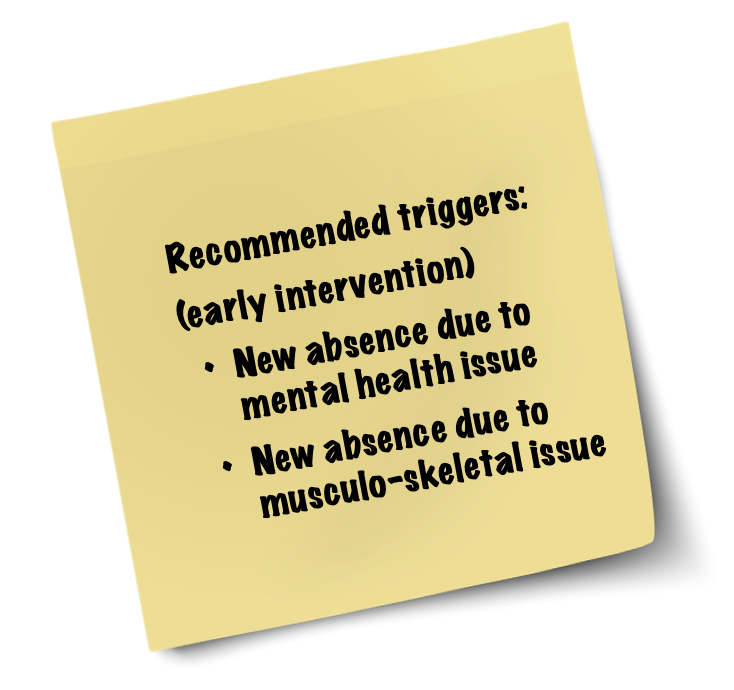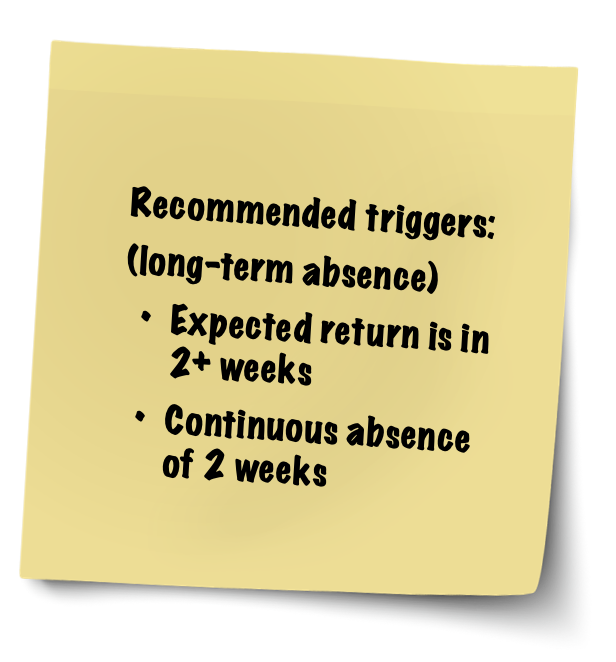How to manage complex absence cases
28 calendar days is a common definition of long-term absence. There’s nothing wrong with this definition in itself. However, waiting 4 weeks to offer support or consider referral to support services is a missed opportunity. This often means that medical appointments don’t take place until the 6th or 7th week of the absence. It also delays the welfare review meeting with management further to the 8th or 9th week of the absence.
Don’t: Wait 4 weeks to manage complex cases
Studies have shown that the likelihood of an absentee returning to work diminish quickly as the absence drags on. After 4 weeks, 1 in 5 employees will not return to work. After 6 months, 4 in 5 never return. From these statistics, you can calculate that by the 8-week mark, you’ve already lost 1 to 2 employees permanently. The case is strong to reach out to potential long-term absentees already long before the spell is officially classed as long-term.
Do: Review high-risk absence on Day-1
If an employee reports an absence due to a mental-health-related reason, flag it to the manager for review straight away. Naturally, they need to consider the employee’s personal situation. However, there is no benefit in waiting several weeks before offering support. In an ideal workplace, the line manager cultivates an atmosphere of trust, where the employees feel like they can speak to the manager about their worries even before this escalates to an absence. Failing that, a prompt absence alert kickstarts the welfare process as soon as the absence is reported. Being proactive will help make the absentee feel that their employer cares about their wellbeing.
Musculoskeletal injuries also have a high likelihood to turn into long-term issues. Early intervention in the workplace can stop the injury from being aggravated and stop this escalating to an absence. Early intervention after the injury has resulted in an absence can help the employee recover. Did you know that staying active is usually better than bed rest? A return to work in some capacity, where possible, can be beneficial both mentally and physically. Certainly, by the fourth week of absence, you have already missed a crucial opportunity to help the employee in their recovery.
Do: Reach out when the expected return is in 2 weeks or more
Being proactive is our mantra. As soon as an employee sends in a doctor’s note for 2 weeks or says they think they will be absent for several weeks, a welfare meeting should be arranged. (This is of course dependent on the employee being well enough to attend.) A 2-week absence easily becomes a 4-week absence and the visible and invisible barriers to a return to work start building up. These meetings don’t need to have a disciplinary element, they can simply serve as an opportunity to explore options for – or obstacles to – a future return to work plan.
Maintaining positive contact with absent employees is a key tool in keeping employees engaged. It makes it easier for them to come back to work when they feel well enough. It’s also true that you don’t have to be 100% fit to go back to work. As mentioned in relation to musculoskeletal injuries, staying active and returning to work can form a key part of recovery. There may be ways that the employer can accommodate a phased return or adjusted duties. This can all be discussed at a welfare meeting.
Sometimes, the employee isn’t able to provide an expected return date. In such cases, the fallback should be to arrange a review after they’ve been off for 2 weeks, rather than waiting a whole month.
This chapter is part of our “Make It Simple” Absence Policy series. If you’d like to learn more about writing a best practice absence policy, sign up to our newsletter for your free copy of the full eBook.


